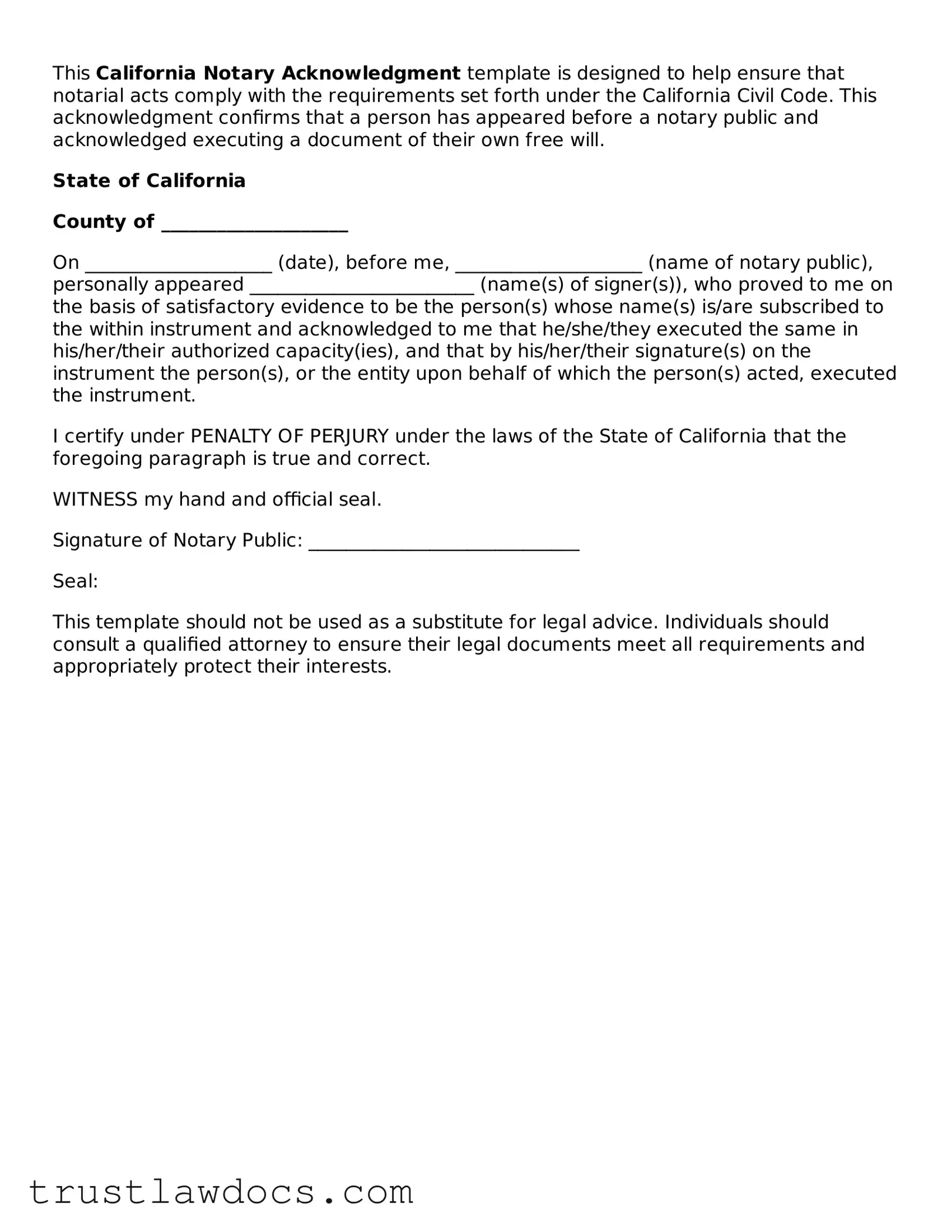The California Notary Acknowledgement form shares similarities with various other documents, primarily based on its purpose and structure. A similar document is the Jurat, used to certify that a person has sworn to or affirmed the truthfulness of the contents of a document before a notary. Both require the presence of the individual making the declaration and the signature must be made in the presence of the notary, emphasizing the authenticity and intention behind the document.
Power of Attorney documents also bear resemblance. These documents, which grant one person the authority to act on another’s behalf in legal or financial matters, often require notarization to ensure the signer's identity and willingness. Like the Notary Acknowledgment form, they are critical in verifying the legitimacy of the individual’s intentions and preventing possible fraud.
A Deed of Trust is another document similar to the Notary Acknowledgement form. This document, used in some states as a substitute for a mortgage, must be notarized to confirm the borrower's agreement to the terms and to officially transfer the real property interest to the trustee. The role of the notary here, as with the Acknowledgment form, is to authenticate the identities of the signing parties.
The Quitclaim Deed, which is used to transfer ownership of property without guaranteeing the title, closely aligns with the Notary Acknowledgment form in terms of its requirement for notarization. This step is vital for establishing the signer's acknowledgment of the document's terms and for officially documenting the transfer of interest in property.
Last Wills and Testaments, while significantly different in purpose, necessitate notarization in many jurisdictions to confirm the document's validity and the testator's intention. The Notary Acknowledgment form, in providing a means to authenticate a signer's identity and willingness, serves a similar foundational purpose in ensuring the document's legal standing and enforceability.
Custody Agreements, documents that specify the terms and conditions of child custody between parents or guardians, also often require notarization. By doing so, these documents affirm the parties' agreement to the terms laid out within, similar to how a Notary Acknowledgement form establishes a person's acknowledgment and consent to a document.
Mortgage Closing Documents, pivotal at the end of the home-buying process, require notarization to authenticate the identity of the borrower and to solidify the agreement between the borrower and the lender. The Notary Acknowledgement form plays a similar role in these transactions, ensuring all parties are accurately represented and agree to the terms.
Medical Directives or Advance Health Care Directives, which outline a person’s preferences for medical treatment and end-of-life care, often require notarization. This ensures the document reflects the individual’s true wishes, mirroring the Notary Acknowledgment form's purpose of authenticating a person's signature and intent.
Corporate Resolutions, which are formal decisions made by a company’s board of directors, often require notarization to certify the resolution's authenticity and the authority of the signers. This is akin to the Notary Acknowledgment form’s role in verifying the identity and willingness of individuals acting in their official capacities.
Contract Agreements, which might vary widely in content and purpose, ranging from employment contracts to service agreements, often necessitate notarization to certify the parties' agreement and understanding. The acknowledgment by a notary, similar to that provided by a Notary Acknowledgement form, lends credibility and a layer of verification to the document's execution.
